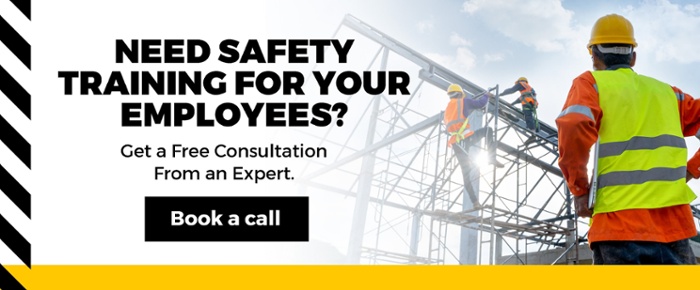Heavy equipment is a vital part of the construction industry. Large amounts of earth or other materials must be moved or used to create landscapes for building or paving—an impossible task without the right equipment.
Heavy equipment is also used to remove essential materials from the ground for industrial use. But heavy equipment poses a high risk for accidents and injuries on the job site.
The Importance of Heavy Equipment Safety
About 20% of the 5,333 worker deaths reported in 2019 were in construction. OSHA also reports that two-thirds of all construction accidents can be attributed to these “fatal four” main causes:
- Falls: Falling from a height or off construction equipment
- Struck by an Object: Being hit by a swinging or free-falling object
- Electrocutions: Being accidentally energized by electricity
- Caught In-Between: Being caught in-between components of construction machinery or materials
Three of the above four causes routinely occur around or on heavy equipment. It is therefore imperative that construction companies acknowledge the importance of heavy equipment safety.
10 Heavy Equipment Operator Safety Tips
There are numerous types of heavy equipment. Each piece of equipment poses its own set of risks. Here are ten basic heavy equipment operator tips to help keep your workers safe.
Inspect Equipment Before Use
Heavy equipment operators should be responsible for conducting an inspection of their assigned machines before each period of work. The inspection should begin with a ground-level walkaround and include a fluid level check looking for loose items, leaks, or other possible issues. These problems can then be corrected before they develop into dangerous situations.
Maintain Three-Point Contact
Many falls occur from unsafe climbing on heavy equipment. Operators should always maintain three points of contact when climbing aboard or off any machine. This means at least two hands or feet should be secure while moving one hand or foot in climbing up or down.
Wear a Seatbelt
Heavy equipment often moves over rough terrain and can throw an operator from the machine, causing serious injuries. Always wear a seatbelt when operating any piece of heavy construction equipment, even when only moving it from one location to another.
Watch for Blind Spots
Large equipment has many blind spots. This creates many risks for inadvertently crushing people or objects during operation. Know your blind spots when operating any piece of heavy equipment and learn to watch them regularly for stray workers or adequate clearance around objects or other vehicles.
Recognize Your Limits
Operating some heavy equipment can be physically demanding. Intense heat or other weather conditions can also wear on an operator, causing fatigue and slower reflexes. Know your limits as a worker and stop operating any machine when you feel tired, sick, emotionally drained, or otherwise incapacitated in any way. You should also never operate heavy equipment when on medications that could cause drowsiness.
Use Effective Communication Signals
Everyone on the job site working around heavy equipment should learn the basic hand signals for use with equipment operators. Use these signals to indicate movement and operation, ask questions, and otherwise make your intentions known to those around you.
Have a Spotter
A spotter is a person whose designated task is to watch out for a specific piece of heavy equipment. They help the operator with determining clearances, safe operation zones and conditions, and steering other workers away from the danger zone. When possible, each piece of heavy equipment in a busy construction zone should have a spotter in attendance.
Related Article: Work-Related Injuries: Heavy Lifting 101
Have Personal Protective Equipment (PPE)
Heavy equipment operators should wear and use appropriate Personal Protective Equipment (PPE). This includes head and eye protection, ear protection, gloves, sturdy steel-toed boots, and other specific equipment for certain jobs. Some environments may require a respirator.
Create Buffer Zones
When possible, it is always a good idea to create buffer zones around the areas where heavy equipment is in operation. These safety zones keep other vehicles and workers clear of where equipment will be traversing, working, or otherwise operating.
Provide Specialized Equipment Training for Operators
Every heavy equipment operator should receive specialized training for the piece of equipment they are to operate. Inexperienced operators should be allowed to begin with simple tasks to gain experience before tackling more complex operations. Sometimes this training happens when arriving at a new job site that presents unique challenges.
Professional Heavy Equipment Safety Training WiTH SAFETY PRO
Providing a safe environment for all your workers on a construction site is the company’s responsibility. This includes adequate heavy equipment operation and safety training. SafetyPro consultants can provide such training, as well as refresher training and other resources to help keep your workers safe and prevent accidents.


















